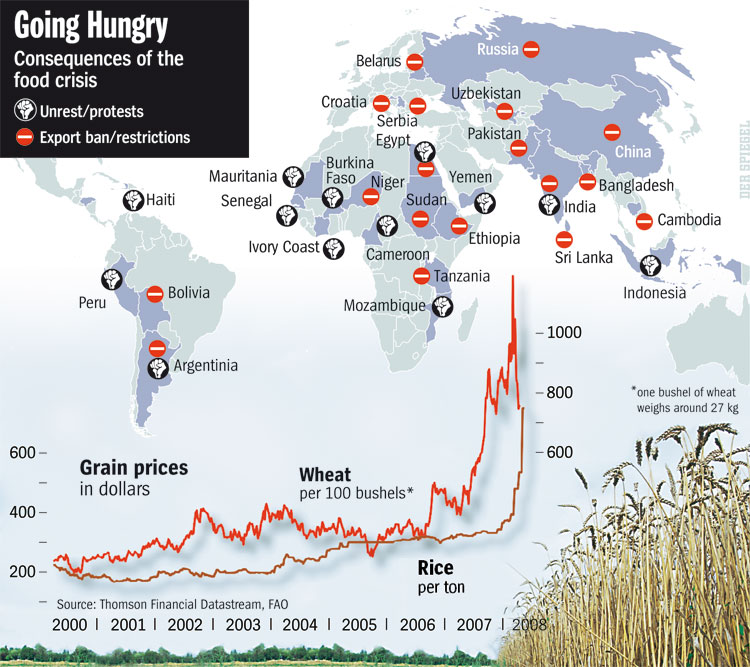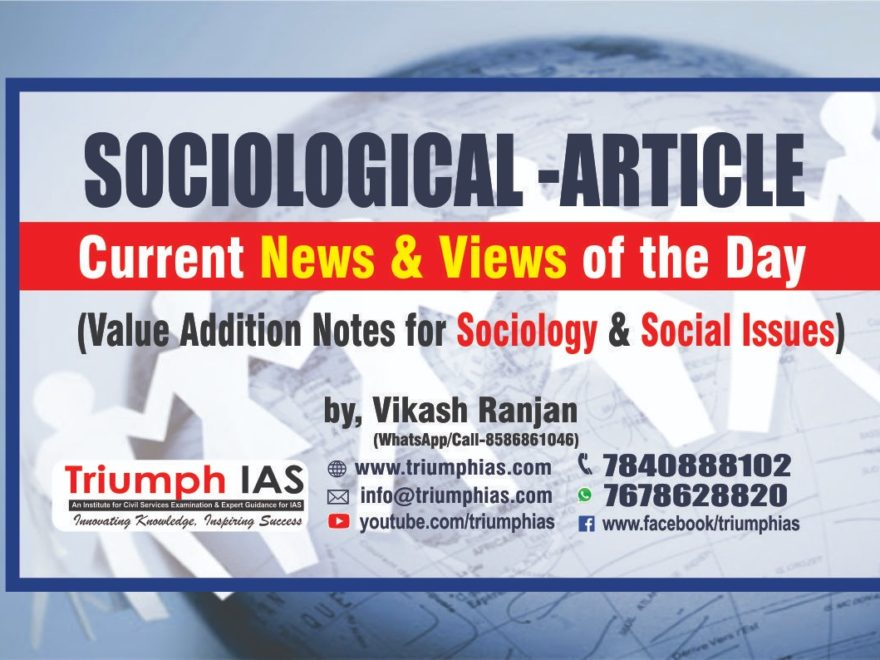Evidence of food insecurity in India
Relevance: Mains: G.S paper II: Governance: Issues relating to poverty and hunger. & G.S paper III: System- objectives, functioning, limitations, revamping; issues of buffer stocks and food security. & Sociology: Rural and Agrarian transformation in India:
(a) Programmes of rural development, Community Development Programme, cooperatives, poverty alleviation schemes.
(b) Green revolution and social change.
(c) Changing modes of production in Indian agriculture .
Introduction:

Data from the latest State of Food Security and Nutrition in the World (SOFI) report show that India is the country with the largest population of food insecure people. The report released by several United Nations organisations show that the prevalence of food insecurity increased by 3.8% points or 6.2 crore more people in India between 2014 and 2019.
Authoritative indicators:
- The annual SOFI report presents the most authoritative evaluation of hunger and food insecurity in the world.
- SOFI presents two key measures of food insecurity: Prevalence of Undernourishment (PoU) and Prevalence of Moderate and Severe Food Insecurity (PMSFI).
- Both of these are globally-accepted indicators of progress towards the Sustainable Development Goals (SDG) Target 2.1 to end hunger and food insecurity.
1. Prevalence of Undernourishment:
- PoU is focused on estimating proportion of population facing chronic deficiency of calories.
- Estimates of PoU are based on food balance sheets and national surveys of consumption.
- Given that consumption surveys are done infrequently in most countries, these estimates are often based on outdated data and are revised when better data become available.
2. Prevalence of Moderate and Severe Food Insecurity:
- PMSFI is a more comprehensive measure of the lack of access to adequate and nutritious food.
- It is based on annual surveys that collect information on experiences of food insecurity (such as food shortages, skipping meals, and changing diet diversity because of a lack of resources).
- It uses Food Insecurity Experience Scale (FIES), a gold standard in food security measurement developed by Food and Agriculture Organization (FAO), for estimating globally-comparable prevalence rates.
- However, govt. of India neither conducts official FIES surveys nor accepts estimates based on FAO-GWP (Gallup World Poll) surveys.
- Consequently, the estimates of PMSFI for India are not published in SOFI.
Country data:
- These estimates show that 7.8% of India’s population suffered from moderate or severe food insecurity in 2014-16, the proportion rose to 31.6% in 2017-19.
- The number of food insecure people grew from 42.65 crore in 2014-16 to 48.86 crore in 2017-19.
- India accounted for the highest global burden of food insecurity at 22% in 2017-19.
- PMSFI fell by 0.5 % points in the rest of South Asia, but it increased in India by 3.7% points during 2017-19.
Concerns:
- India has not released the latest National Sample Survey Office (NSSO) consumption expenditure survey data for 2017-18.
- As a result, conventional measures of poverty and food consumption are not available for recent years.
- Because of a lack of regular availability of consumption survey data, the FAO uses supply-wise data on per capita food availability to measure changes in average per capita calorie intake.
- The approach has become untenable for India because of a large and growing disparity between supply-side data and data from the consumption surveys.
- While the per capita dietary energy supply in India increased by 3.8% between 2011-13 and 2015-17, the leaked consumption survey data showed that average consumption expenditure (covering food and other expenses) fell by 3.7% between 2011-12 and 2017-18.
Causes of suffering:
- The significant rise in food insecurity is a clear indicator of the overall economic distress marked by a deepening agrarian crisis, falling investments across sectors and shrinking employment opportunities.
- As per the latest Periodic Labour Force Survey data the unemployment rates in the recent years have been higher than in last four decades.
- It is widely believed that demonetisation and introduction of the Goods and Services Tax were two prime causes of economic distress during this period.
- A sudden imposition of an unprecedented and prolonged lockdown has brought renewed focus on the problems of hunger and food insecurity.
- With a sudden loss of livelihoods, a vast majority of India’s poor are faced with increased food insecurity, hunger and starvation.
Conclusion:
- Withholding of the consumption survey data by the government has meant that SOFI continues to use outdated data for variability of food intake, making PoU estimates for India untenable. Further, the estimates of the PMSFI provide an important baseline estimate for the situation before the COVID-19 pandemic.
- It is critical for India to conduct a National Survey on food insecurity to assess the impact of the COVID-19 pandemic on food security of different sections of the population. A transparent survey is needed to gauge the real situation of food insecurity and then implement measures to tackle it at the earliest.
For more such notes, Articles, News & Views Join our Telegram Channel.
Click the link below to see the details about the UPSC –Civils courses offered by Triumph IAS. https://triumphias.com/pages-all-courses.php

